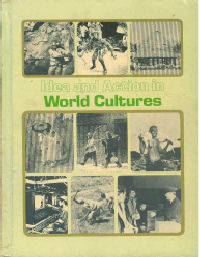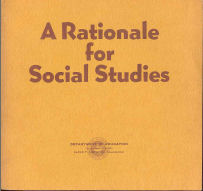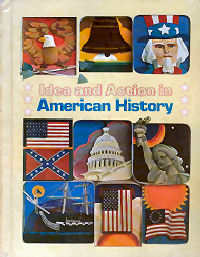BOOKS
My first published attempt to bring together systems concepts and conceptual modeling appeared in an article titled "A New Social Studies"in the October 1966 Phi Delta Kappan.
I continued to elaborate the ideas in various journals, refined them further while researching and writing two textbooks for Prentice-Hall, then attempted a comprehensive presentation in What's Worth Teaching? Selecting, Organizing, and Integrating Knowledge.
This little book, published by The State University of New York Press as part of their Philosophy of Education Series, (a) laidout briefly and in simple language the theoretical underpinnings of my approach to curriculum, (b) discussed the implications of that approach for all major fields of study, and (c) provided examples of instructional activities.
In 1993, Books for Educators in Federal Way, Washington, awarded the book their "Gold Medal" award andboughtfrom SUNY Press the right toco-publish it.
Some quotes from a pre-publication review of the manuscript for SUNY Press by Dr. Philip L. Smith of Ohio State University:
- "The work is original, insightful, extremely well presented, and deals with fundamentally important problems in education."
- "This is the most interesting manuscript on curriculum I have ever read."
- "Serious-minded educators who begin to read this work are very likely to finish it, and to be influenced by it for the better. Those who are not serious-minded, if there is any hope for them at all, might start to be serious-minded if somehow you can get this manuscript into their hands."
The book is available from SUNY Press, Albany, NY, and from Books For Educators, 33506 10th Place So., Federal Way, Washington 98003,
Phone: 1-888-777-9827E-mail:books4@oz.netPatricia Spears, Florida's state-level consultant for social studies at the time, asked in 1970 if I would write Florida's social studies guide. The task had been in the hands of a committee for several years and the committee had been unable to bring it to a conclusion.
I agreed to do so if the draft which I'd eventually submit would either be rejected or accepted and printed without changes. Agreement was reached and, with my brother Howard's help, A Rationale For Social Studies was produced.
The 69-page, highly graphic book was first published in 1971, but demand made several more press runs necessary. State officials said it was the single most popular publication Florida's Department of Education had ever produced.
Idea and Action In World Cultures Idea and Action In American History 
In the late 1960s I was approached by a vice-president and two editors from the textbook publishing division of Prentice-Hall, Inc. They were interested, they said, in putting together secondary-level textbooks in American history and world cultures which would reflect the thinking of the most knowledgeable and sophisticated 5% of the social studies textbook market.
An article of mine they'd read in the Phi Delta Kappan led them to ask if I'd be interested in undertaking the project.
What eventually emerged (again with the help of my brother Howard) were two books: Idea and Action In American History, and Idea and Action In World Cultures.
Several things set the books apart from the competition. They made far more use of primary sources than was customary. They required users to engage in all known thought processes. And they made unabashed use of concepts as basic organizers, concepts useful not merely as organizers of historical and anthropological content but essential tools for students in their effort to make sense of their own experience and the world around them.Seven concepts organized Idea and Action In American History:
- motivation,
- value conflict
- cultural differences
- polarization
- autonomy
- cultural interaction
- system change
Eight concepts organized Idea and Action In World Cultures
- human patterns
- habitat
- values
- social control
- learning
- technology
- status
- outsiders
What Prentice-Hall discovered was that the "the most knowledgeable and sophisticated 5% of the social studies textbook market" didn't make the decisions about which textbooks should be purchased. This was particularly the case in 1977 when the two books were published. Reacting to curriculum experimentation in the 1960s, America was once again in the grip of a "back to basics!" mood, and there was no second printing of either book.
Newly published: Marion Brady, “Why Current Education Reform Efforts Will Fail," The Gates Foundation and the Future of U.S. “Public” Schools, Philip E. Kovacs, ed., New York: Routledge, (Taylor & Francis Group)2011, (Ch. 12, pp. 203-219)



